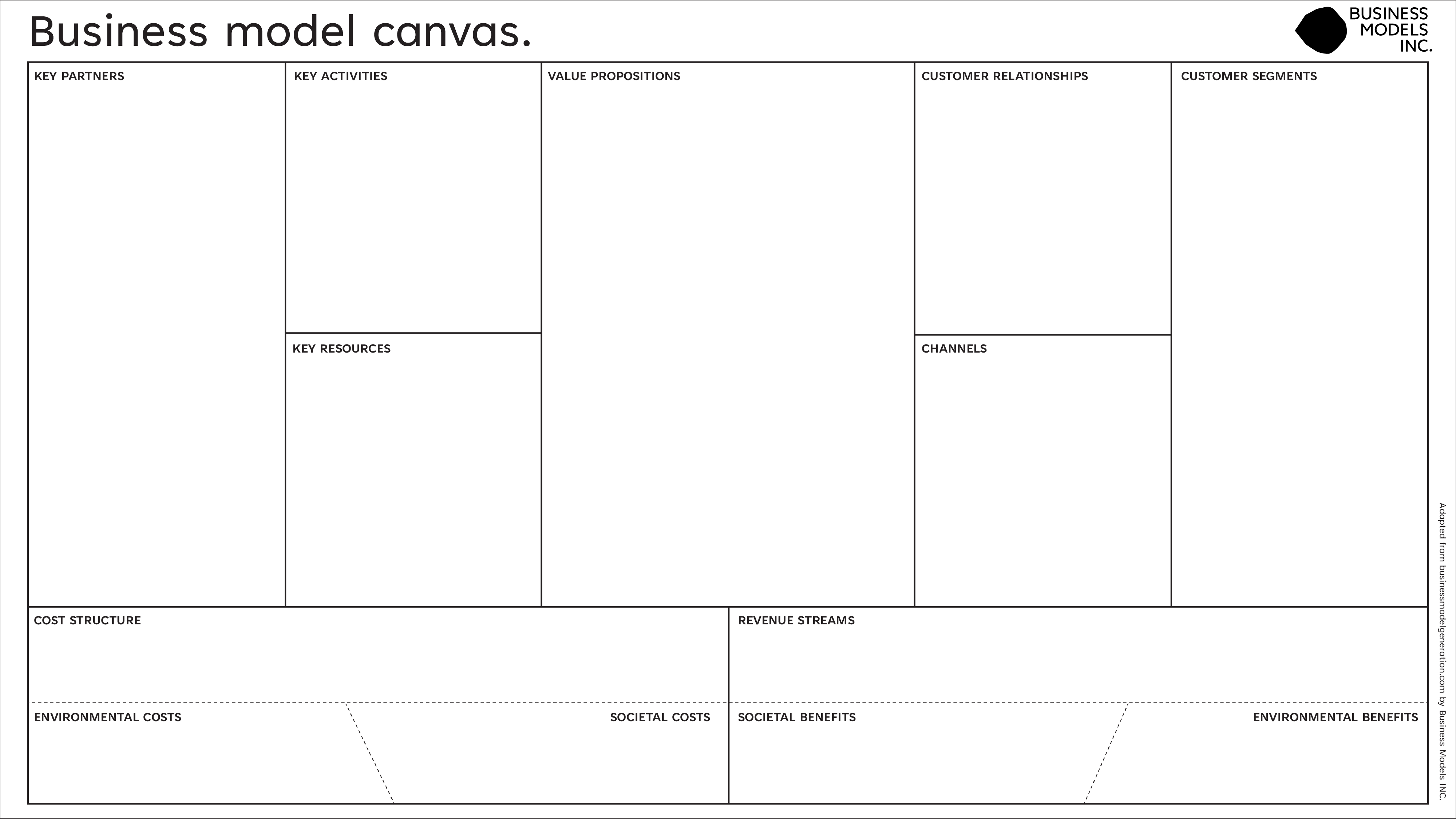Starting and growing a business is an exciting journey, but it’s not without its challenges. One of the biggest challenges that business owners face is how to effectively plan and execute their growth strategy. That’s where a model business canvas comes in. In this guide, we’ll dive into what a model business canvas is and how you can use it to grow your business.
Section 1: What is a Model Business Canvas?
In this section, we’ll explain what a model business canvas is and provide an overview of the different components that make it up.
Definition of a model business canvas
A model business canvas is a strategic tool used to help businesses visualize and plan out their business model. It provides a holistic view of a business by breaking it down into key components, including customer segments, value propositions, revenue streams, and cost structures, among others.
Overview of the different components of a model business canvas
The different components of a model business canvas include:
- Customer Segments: This component defines the different groups of customers that a business serves. It’s important to understand the needs and characteristics of each customer segment to create effective marketing and sales strategies.
- Value Proposition: This component describes the unique value that a business offers to its customers. It’s important to clearly define the value proposition to differentiate the business from its competitors.
- Channels: This component outlines the different ways that a business reaches its customers. It’s important to choose the most effective channels based on the needs and preferences of each customer segment.
- Customer Relationships: This component describes how a business interacts with its customers. It’s important to establish strong customer relationships to retain customers and generate repeat business.
- Revenue Streams: This component defines the different ways that a business generates revenue. It’s important to diversify revenue streams to minimize risk and maximize profitability.
- Key Resources: This component outlines the key resources that a business needs to operate effectively, including physical resources, human resources, and intellectual property.
- Key Activities: This component describes the key activities that a business needs to perform to deliver its value proposition.
- Key Partnerships: This component identifies the key partnerships and collaborations that a business needs to establish to deliver its value proposition.
- Cost Structure: This component defines the different costs that a business incurs to operate. It’s important to understand the cost structure to optimize profitability.
Benefits of using a model business canvas
Some of the benefits of using a model business canvas include:
- A holistic view of the business: A model business canvas provides a comprehensive view of the different components of a business, which helps business owners make more informed decisions.
- Improved strategic planning: A model business canvas helps business owners identify areas for improvement and develop effective growth strategies.
- Better communication: A model business canvas provides a common language and framework for discussing the business, which improves communication and collaboration among team members.
Section 2: How to Create a Model Business Canvas for Your Business
In this section, we’ll provide a step-by-step guide on how to create a model business canvas for your business.
Conducting market research
The first step in creating a model business canvas is to conduct market research. This involves analyzing the market and identifying potential customer segments, competitors, and trends.
Defining your target audience
Once you’ve conducted market research, you need to define your target audience. This involves identifying the specific customer segments that your business will serve.
Identifying your key partners and suppliers
Next, you need to identify your key partners and suppliers. This involves identifying the individuals or organizations that you’ll need to collaborate with to deliver your value proposition and operate your business effectively.
Defining your value proposition
After identifying your target audience and key partners, you need to define your value proposition. This involves identifying the unique value that your business offers to your customers and how it differentiates your business from competitors.
Identifying your revenue streams
Next, you need to identify your revenue streams. This involves identifying the different ways that your business generates revenue, such as through sales, subscriptions, or advertising.
Outlining your key resources and activities
You also need to outline your key resources and activities. This involves identifying the resources and activities that are essential to your business operations, such as your team, technology, and processes.
Identifying your cost structure
Finally, you need to identify your cost structure. This involves identifying the costs associated with operating your business, such as rent, salaries, and marketing expenses.
Section 3: Using Your Model Business Canvas to Grow Your Business
In this section, we’ll explain how you can use your model business canvas to grow your business.
Identifying growth opportunities
One of the key benefits of using a model business canvas is that it helps you identify growth opportunities. By analyzing each component of your business model, you can identify areas where you can improve and grow your business.
Developing growth strategies
Once you’ve identified growth opportunities, you need to develop effective growth strategies. This may involve expanding your target audience, diversifying your revenue streams, or forming strategic partnerships.
Monitoring your progress
To ensure that your growth strategies are effective, you need to monitor your progress regularly. This involves tracking key metrics such as revenue, customer acquisition, and customer retention.
Making adjustments
Based on your progress, you may need to make adjustments to your business model. For example, if a particular revenue stream is not performing as expected, you may need to explore alternative revenue streams.
Conclusion
A model business canvas is a powerful tool for planning and executing your growth strategy. By providing a comprehensive view of your business model, it helps you identify areas for improvement and develop effective growth strategies. By following the steps outlined in this guide, you can create a model business canvas for your business and use it to grow your business effectively.




